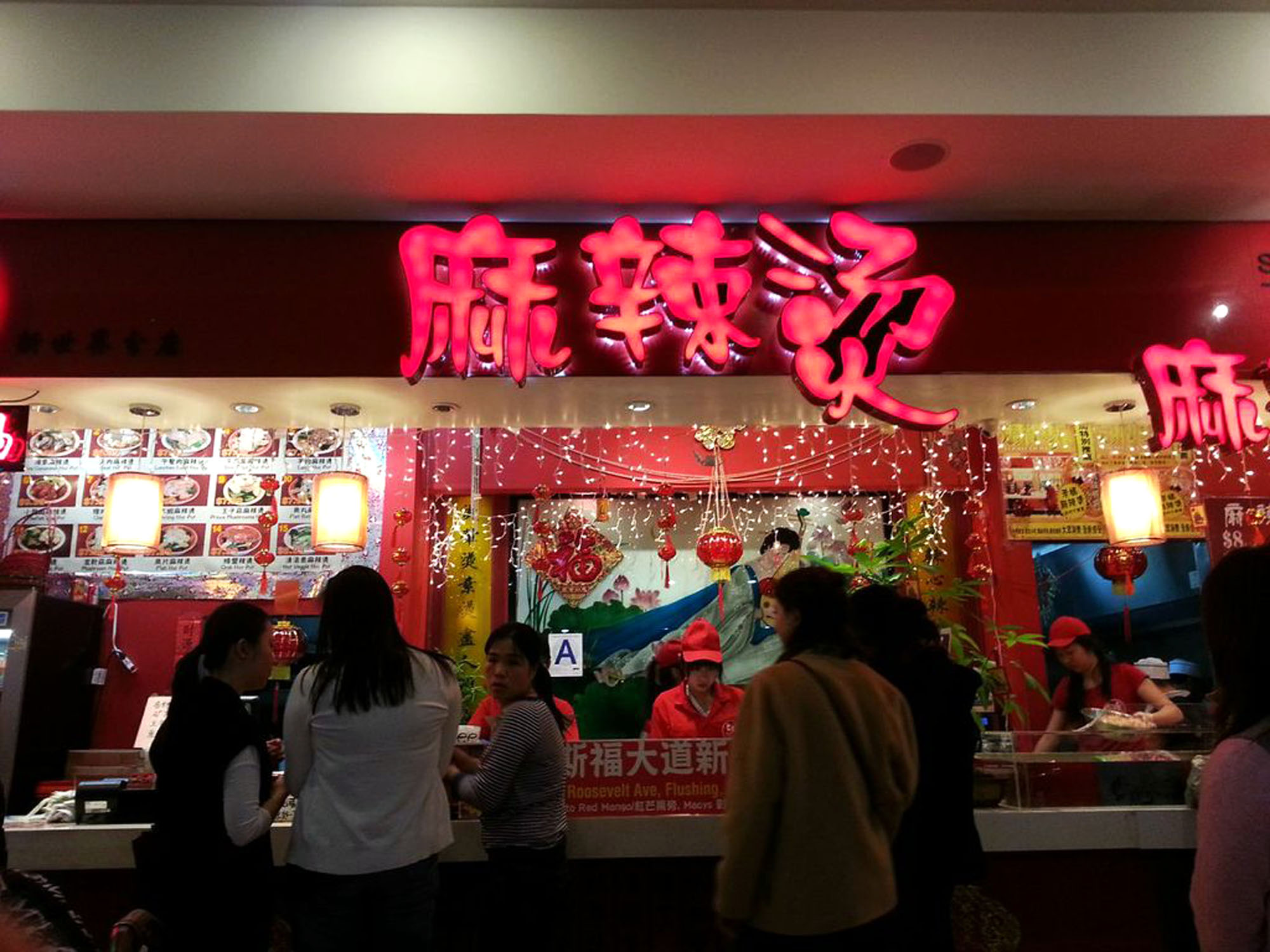Experiencing The Changes In Downtown Flushing Through Its Dishes
By Eleanore Ye
Walking the streets of Flushing, Dian Yu, director of the Flushing Business Improvement District (BID), sees changes occurring every day, and he compares the evolution of the neighborhood to the different versions of one of China’s most delicious and dynamic dishes.
“Beef noodle soup, one name, many different flavors, Taiwanese style, Szechuan style, Northern style, and it’s all very different,” Yu said “Recently, I’ve been tasting the Northern style, which is a little bit stronger in taste than the rest. But it has its own unique flavors, which is good because it has broadened my taste buds.”
The neighborhood’s wide variety of cuisines from different regions of Asia reflect the economic, demographic, and cultural developments in Flushing. Among the different countries and regions represented in the vibrant dining scene are Taiwan, Shanghai, Vietnam, Malaysia, Canton, Hong Kong, Szechuan, Korea, and Japan.

Unlike Chinatown, Flushing is less for tourists but more for the Asian community in Queens. Recently, a lot of non-local diners have been coming into Flushing to get a taste of the diverse food. Gina Chen, a Flushing resident of 25 years and a Kiehl’s cosmetics counter manager in Macy’s Flushing, says, “Flushing is the little Chinatown, except it’s more where the commerce happens, it’s not the tourist Chinatown. The change itself has actually been really good for the commerce in Flushing. Flushing has grown exponentially, a large part is because of the influx of the Asian population.”
According to data from the 2010 Census, Asians account for 69.2 percent of the total population of 72,008. Compared to 2000, Flushing’s population grew 2,646 from a population of 69,362. With the growth of the Asian population, the dining scene in flushing has also grown.
According to the travel website TripAdvisor, which posts reader reviews, Flushing has 381 restaurants. Many small restaurants find it difficult to compete for customers and their share of wallet. Yu says, “People neglect to see the small businesses. It is not easy to survive in this community because of the cut throat competition.”
The area often has several restaurants serving the same food from the same region of Asia. On top of that, Chinese food chains have expanded and now dominate the market, limiting smaller, privately owned businesses’ ability to thrive.
For example, bubble tea has always been popular among the Asian community. Five years ago, the only bubble teashops that served the community were Quickly’s and Ten Ren. Currently, there are about six popular chains of bubble teashops within a two to three block radius of each other. Three of these six bubble tea companies, Cha Time, Kung Fu Tea, Quickly’s, Comebuy, TenRen, and Coco, have at least two locations in downtown Flushing.
“In Flushing, it’s very competitive. A lot of things change but a lot of thing stay the same. Everybody is always out to make money in Flushing,” said Michael Chuang, owner of 101 Taiwanese Cuisine, located in downtown Flushing.
He said Flushing’s food industry is “extremely competitive and tiring,” and if he comes up with a genius food idea, in three months, he guarantees someone else will imitate it.
Asked what is popular now, he said Taiwanese stinky tofu and popcorn chicken. “Our popcorn chicken is brought back from Taiwan. It’s not like American popcorn chicken. There are different sauces you put on top of it, it’s more of a walk around food”, Chuang said. This is exemplary of the people of Flushing. The residents and business owners are always on the run, commuting from one destination to another, for work and for food.
Chuang states, “No matter how far it is, my friends and I, are always willing to travel for food.”
There are copious amounts of restaurants and food stalls that serve people during different occasions and times of day. For example, in the morning, people rush and grab something like a small bun with a cup of milk tea from Taipan bakery. During lunch, workers tend to eat large portions to fuel for the rest of the day, like a large bowl of beef noodle soup from the New World Mall food court. Then, during dinner for special occasions, people go out to feast on plates of seafood, meat, and vegetables from a more upscale spot, like Jade Asian Restaurant.
With Chuang’s father, Timothy Chuang, being a board member of the Flushing BID, his father had a lot to do with drawing in non-local diners from out of the area. Supporting this cultural diffusion, he says, “There’s a lot more development going on right now. American people coming in [to Flushing], then our culture spreads out further, we get more business, and it helps everyone [Flushing businesses] out.”
A promising and confident statement from the director of Flushing BID envisions the future of Flushing, supporting the statements of Chuang. Yu declares, “As far as I can see, we will become the window to the world because of the two international airports [JFK and LaGuardia].” The close proximity of the two airports to Flushing leads to a higher chance of inviting new foreign visitors and further expanding the taste of Flushing.
Take A Tour Around Asia Through Flushing’s Dishes
View Taste of Asia in a larger map
